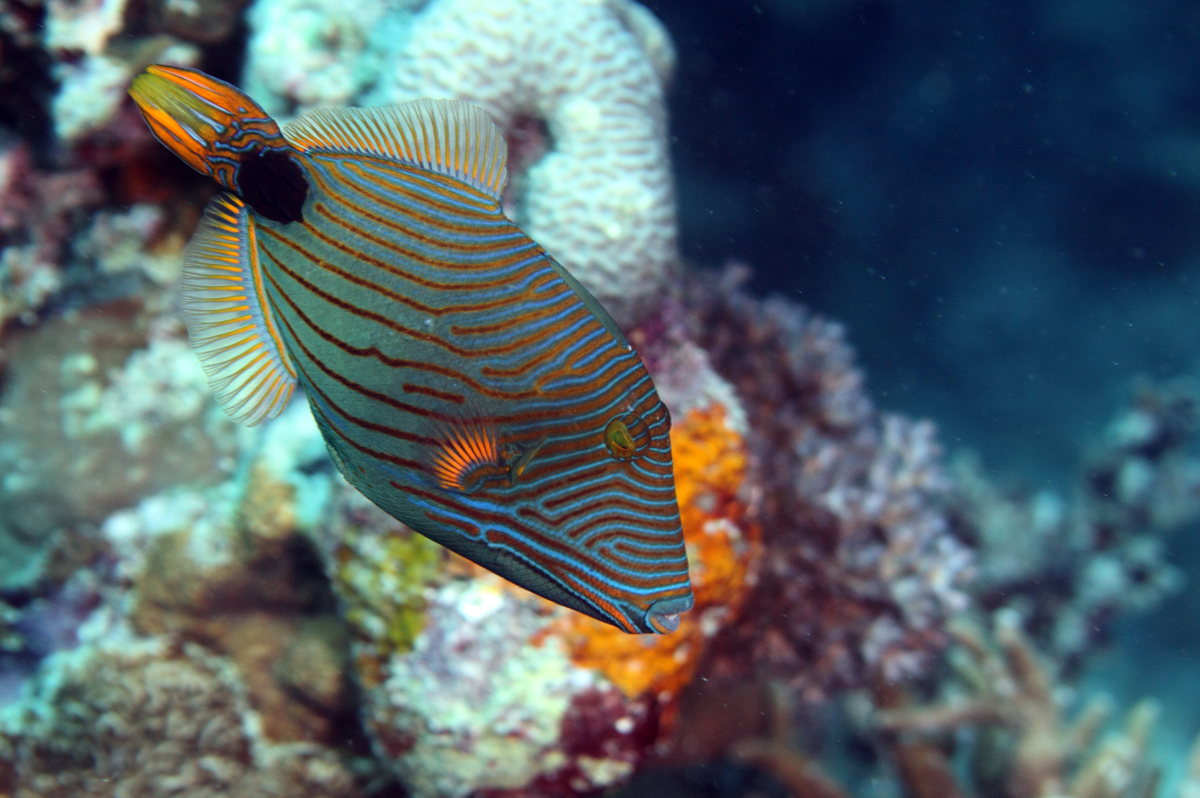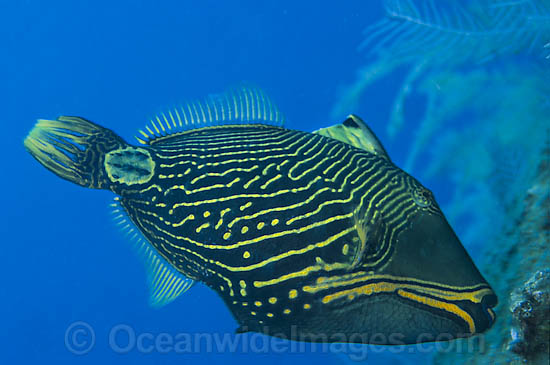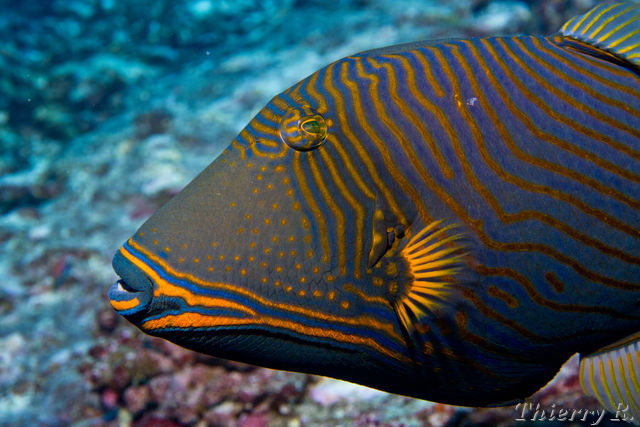
Balistapus undulatus
FAMILY
Balistidae
TAXONOMY
Balistapus undulatus Park, 1797, Sumatra, Indonesia.
OTHER COMMON NAMES
English: Orange-lined triggerfish; French: Baliste striй; German:
Orangestreifen-Drьckerfisch; Afrikaans: Oranje streepsnellervis;
Japanese: Kumadori.
PHYSICAL CHARACTERISTICS
Body compressed and oblong, the forehead sloping to above
the eye, the caudal peduncle compressed, with a truncate caudal
fin. There are three spines, 24–27 soft rays in the dorsal
fin, and 20–24 soft rays in the anal fin. The first dorsal spine
can be locked. Body color variably green to dark green or dark
brown. There is a pattern of orange lines that curve obliquely
on the posterior portion of the head and along the body. A
band of orange and blue stripes runs obliquely from the mouth
to below the pectoral fin. There is a large black blotch on the
caudal peduncle. The caudal fin and soft fin rays of the dorsal,
anal, and pectoral fins are orange. Grows to at least 11.8 in (30
cm) in total length.
DISTRIBUTION
Tropical and subtropical Indo-West Pacific from the Red Sea
and East Africa south to Natal in South Africa, east through
Micronesia and the Line Islands to the Marquesas and the Tuamotu
Archipelago in eastern Polynesia, south to the Great
Barrier Reef of Australia and New Caledonia, and north to
southern Japan. New research suggests that populations in the
western Indian Ocean, the Indo-Malayan region, and the Pacific
may constitute three distinct species.
HABITAT
Somewhat ubiquitous on reefs; may be found on seaward or
protected reefs and in lagoons at depths ranging from about
6.6 to 164 ft (2–50 m).
BEHAVIOR
Territorial and generally solitary, although individuals may live
in somewhat close proximity to one another and have overlapping
home ranges.
FEEDING ECOLOGY AND DIET
Omnivorous. Feeds on sponges, hydrozoans, tunicates, mollusks,
echinoderms, small fishes, and algae.
REPRODUCTIVE BIOLOGY
Pair-spawns, with a single cluster of eggs deposited in a shallow
nest excavated in rubble or sand. Larvae are pelagic.
CONSERVATION STATUS
Not listed by the IUCN.
SIGNIFICANCE TO HUMANS
A minor commercial or subsistence food fish in some areas
that is either dried and salted or sold fresh. Also collected for
the aquarium trade.
Other popular Animals
Photo Gallery of - Orange-striped triggerfish





 Animalia Life
Animalia Life